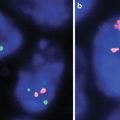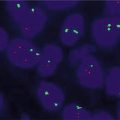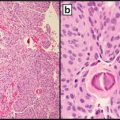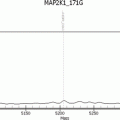Performance characteristic
Verification
Validation
Accuracy
Required by CLIA-’88 and CAP
Required by CLIA-’88 and CAP
Precision
Required by CLIA-’88 and CAP
Required by CLIA-’88 and CAP
Analytical sensitivity
Not required by CLIA-’88, but required by CAP
Required by CLIA-’88 and CAP
Analytical specificity (including interfering substances)
Not required by CLIA-’88, but required by CAP
Required by CLIA-’88 and CAP
Reference range
Required by CLIA-’88 and CAP
Required by CLIA-’88 and CAP
Reportable range
Required by CLIA-’88 and CAP
Required by CLIA-’88 and CAP
In terms of clinical testing, CLIA-’88 differentiates assays in two entities: (1) FDA-cleared or approved in vitro diagnostic (IVD) devices or commercial test kits; and (2) non-FDA-cleared or approved tests, or laboratory developed tests (LDTs). FDA-cleared or approved tests are those cleared or approved by the FDA through the premarket notification (510(k)) or premarket approval (PMA) process for in vitro diagnostic use, respectively. To further emphasize the difference between an FDA-cleared or approved IVD and an LDT, the Association for Molecular Pathology (AMP) has proposed that the latter should be referred to as laboratory-developed procedures (LDPs), defined as “a professional service that encompasses and integrates the design, validation, verification, and quality systems used in laboratory testing and interpretative reporting in the context of clinical care” [2]. Recently, however, the FDA has notified the U.S. Congress of its intent to establish a Framework for Oversight of Laboratory Developed Tests, so the line between the two entities identified by CLIA-’88 may soon be blurred. Currently, for FDA-cleared or approved tests, the validation process is limited compared to LDTs, and it corresponds to a verification of the performance characteristics as advertised by the manufacturer (Table 6.1). On the other hand, for LDTs, the laboratory has to conduct an extensive validation before implementing the assay for clinical testing.
Validation of Molecular Tests for Solid Tumors
As such, CLIA-’88 defines assay validation as “Establishment of performance specifications. Each laboratory that modifies an FDA–cleared or approved test system, or introduces a test system not subject to FDA clearance or approval (including methods developed in–house and standardized methods such as text book procedures), or uses a test system in which performance specifications are not provided by the manufacturer must, before reporting patient test results, establish for each test system the performance specifications for the following performance characteristics, as applicable: (1) Accuracy (2) Precision; (3) Analytical sensitivity; (4) Analytical specificity to include interfering substances; (5) Reportable range of test results for the test system; (6) Reference intervals (normal values); (7) Any other performance characteristic required for test performance.”
Various professional organizations have published guidelines concerning the validation of molecular assays. The CLSI has issued comprehensive guidelines for the validation and implementation of a variety of molecular diagnostic assays [3–5], as well as procedures to evaluate specific performance characteristics for qualitative and quantitative assays [6, 7]. Qualitative assays, as opposed to quantitative assays, are those capable of detecting an analyte but are not able to issue a numeric value associated with the amount of detected analyte. Historical, the field of molecular testing for infectious diseases has led the way in terms of guidelines for assay validation, primarily for quantitative assays [8, 9].
In general, molecular assays for solid tumors fall in the category of qualitative testing, and, as such, a set of performance characteristics needs to be validated before implementing such assays for clinical testing (Table 6.2).
Table 6.2
Performance characteristics for the validation of qualitative assays
Performance characteristic | Definition | |
|---|---|---|
Accuracy | The agreement between the assay result and the reference value. | |
Precision | The ability of an assay to yield the same result for a given sample when tested multiple times… | |
Repeatability | … within the same run. | |
Reproducibility | … in different runs. | |
LoD | The lowest amount of the target analyte that can be detected by the assay with at least 95 % confidence. | |
Analytical | Sensitivity | The capability to yield positive results for samples deemed positive by a reference method. |
Specificity | The capability to yield negative results for samples deemed negative by a reference method. | |
Robustness | The test precision given small, deliberate changes in, preanalytic, analytic, or postanalytic variables that could affect the results. | |
Interfering substances | Such substances may yield erroneous results by inhibiting the reaction or cross-reacting with the intended analyte. | |
Reference range | The range of values found in a designated population of individuals who do not have the disease. | |
Reportable range | All possible results that can be reported by the assay in a qualitative manner. | |
Clinical | Validity | Clinical performance characteristics, such as clinical sensitivity, clinical specificity, positive and negative predictive values in defined populations, including likelihood ratios. |
Utility | The use of assay results to inform clinical decision-making. | |
Molecular testing for solid tumors has recently evolved to encompass the detection of an ever growing list of diagnostic, prognostic, and predictive molecular biomarkers. Therefore, when developing and/or validating a new molecular test for solid tumors, one should delineate the intended use of the assay (i.e., diagnosis, prognosis, or theragnosis—a novel concept for a combined therapeutic and diagnostic approach). This will dictate what kind of samples should be included during the validation process.
In addition, when dealing with solid tumors, one should be aware of the general issues that are unique to molecular testing of surgical pathology specimens, such as: specimen heterogeneity and sampling, sample size, and fixation. Solid tumors are often morphologically and biologically heterogeneous, with genetic markers differing among patients with the same tumor type, and even within individual tumor samples. In addition, within a specimen sample, neoplastic tissue can be admixed with benign or necrotic tissue, thereby affecting the sensitivity of molecular tests. Tumor enrichment techniques are often utilized to ensure accurate results. Such techniques, like Laser Capture Microdissection (LCM) yield very small samples for molecular testing [10]. Similarly, the adoption of less invasive diagnostic procures, such as fine-needle aspiration (FNA) specimens, contributes to the small size of samples sent for molecular testing.
In terms of tissue preservation, the ideal way of preserving the integrity of nucleic acids is to snap-freeze and indefinitely store the tissue at ultralow temperatures [11]. However, this is rarely done in routine clinical practice, where formalin-fixed, paraffin-embedded (FFPE) tissue samples are the norm. Nowadays, many molecular assays have been optimized for FFPE tissue samples. Formalin preserves tissue morphology by forming DNA–RNA–protein cross-links, which prevents ubiquitous DNases, RNases, and proteinases from digesting the cellular structure of the sample. Unfortunately, this cross-linking phenomenon affects the quality of nucleic acids isolated from such fixated tissues, in terms of amplifiability. Moreover, during fixation, nucleic acids often degrade yielding only short DNA (or RNA) molecules corresponding to fragments less than 300 base pairs in length. Therefore, when developing molecular assays intended for fixed tissue samples, one must take into account that only small amplicons should be designed. In addition, the use of fixatives containing either acids (Bouin and decalcifying solutions), which hydrolyze DNA, or heavy metals (Zenker and B5 solutions), which contain mercuric chloride that inhibits enzymes used in amplification, render these specimens unsuitable for most molecular assays [12].
Stay updated, free articles. Join our Telegram channel

Full access? Get Clinical Tree







